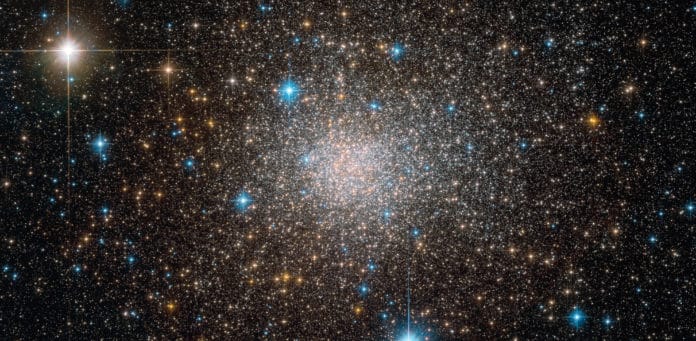Particles traveling through empty space can emit bright flashes of gamma rays by interacting with the quantum vacuum, according to a new study by researchers at the University of Strathclyde.
It has long been known that charged particles, such as electrons and protons, produce the electromagnetic equivalent of a sonic boom when their speeds exceed that of photons in the surrounding medium. This effect, known as Cherenkov emission, is responsible for the characteristic blue glow from water in a nuclear reactor and is used to detect particles at the CERN Large Hadron Collider.
Unexpected
According to Einstein, nothing can travel faster than light in a vacuum. Because of this, it is usually assumed that the Cherenkov emission cannot occur in a vacuum. But according to quantum theory, the vacuum itself is packed full of “virtual particles”, which move momentarily in and out of existence.
These ghostly particles are usually not observable but, in the presence of extremely strong electric and magnetic fields, they can turn the vacuum into an optical medium where the speed of light is slowed down so that high velocity charged particles can emit Cherenkov gamma rays. This is totally unexpected in a vacuum.
A group of Physics researchers at Strathclyde have found that in extreme conditions, such as found at the focus of the world’s most powerful lasers, and the huge magnetic fields around neutron stars, this ‘polarised’ vacuum can slow down gamma rays just enough for Cherenkov emission to occur.
This means that the highest energy cosmic rays passing through the magnetic fields surrounding pulsars should predominantly emit Cherenkov radiation, vastly in excess of other types such as synchrotron radiation.
The research has been published as an Editors’ Suggestion in Physical Review Letters. It formed part of the EPSRC funded Lab in a Bubble project led by Professor Dino Jaroszynski, to investigate a suite of fundamental phenomena occurring in laser-plasma interactions, with applications in industry, security, and medicine.
Professor Jaroszynski said: “The Lab in a Bubble project is providing a unique opportunity to use high power lasers to advance both fundamental knowledge and advanced technology for the benefit of society.
What is more, it will make a major contribution to the new High Field frontier of physics, made possible by the remarkable advances in laser technology which gained the award of the 2018 Nobel Prize in Physics.”
Dr. Adam Noble, who conceived the idea and led the theoretical research effort, said: We take it for granted that nothing can come out of empty space consisting of a pure vacuum. But this is not quite true; modern quantum physics says otherwise, and there are some intriguing surprises.
“There is a huge international effort to push forward the limits of laser technology. While this is driven by the many practical applications of high power lasers, its success will depend on understanding all the fundamental processes involved in laser-matter interactions. These results reveal a new aspect of these processes.”
Alexander Macleod, who also worked on the project as part of his Ph.D. project, said: “Quantum electrodynamics is one of the best-tested theories in physics, with an extraordinary agreement between theoretical predictions and experimental data. But this agreement has only been verified in the weak-field regime. Vacuum Cherenkov radiation offers a new way to test whether it survives in the strong-field limit.”
Lab in a Bubble is a £4.5million Strathclyde-led, EPSRC-funded project for the production of bubble-sized ‘laboratories’ which could boost cancer treatment, medical imaging, and industrial processes, in addition to enabling the investigation of fundamental physics problems.
Researchers in the international project aims to use high-powered lasers to conduct experiments in plasma bubbles so small that their diameters are equivalent to one-tenth of the cross-section of a human hair. Plasma forms 99.999% of visible matter in the universe.
